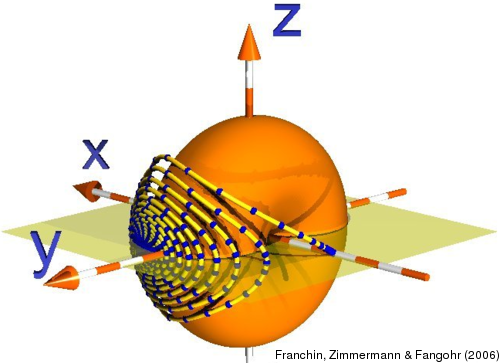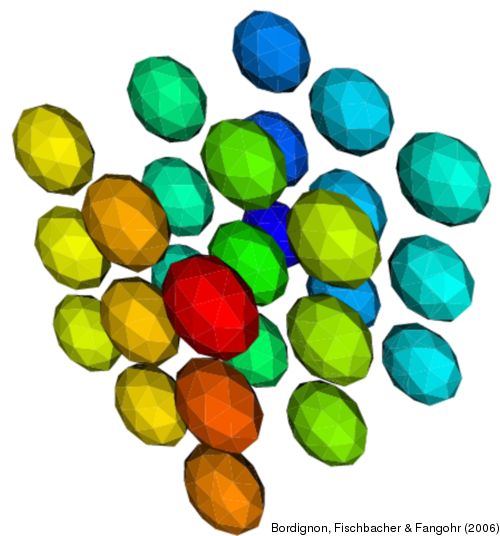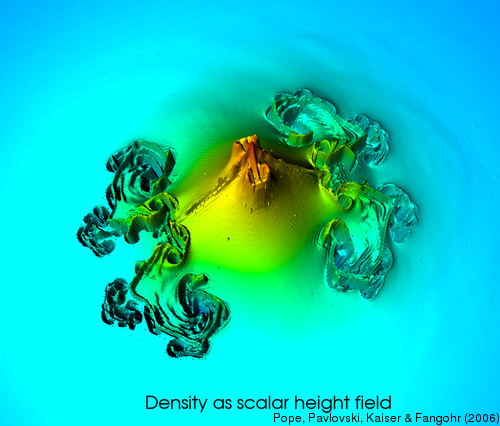
2021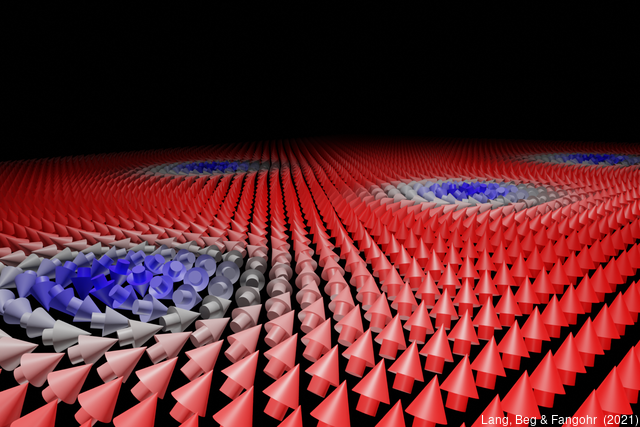
Visualisation of Skyrmion liquid in FeGe sample; Computed using Ubermag. 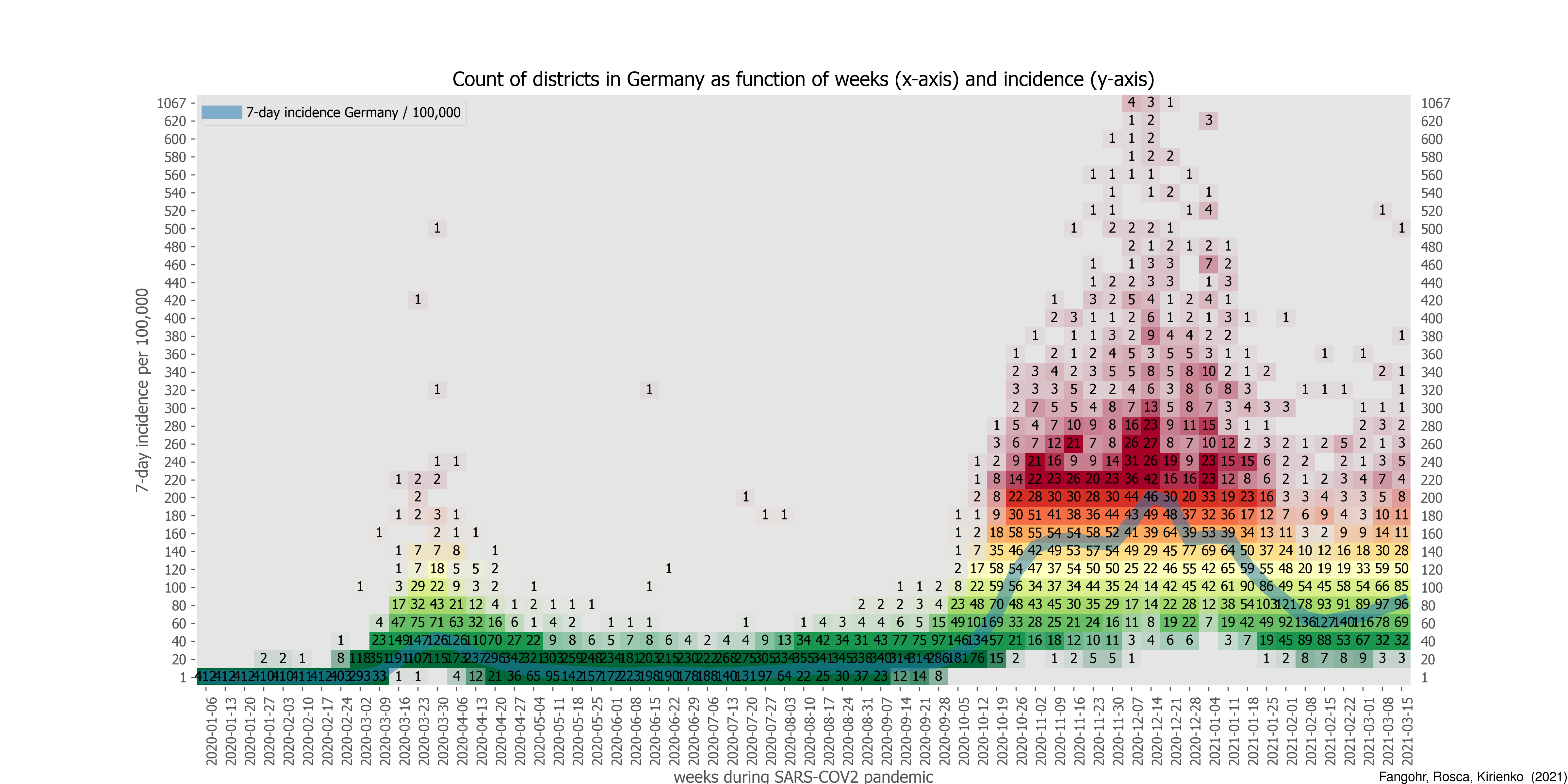
COVID19 infections for all districts (Landkreise) in Germany. The x-axis shows the date; each column in the plot represents COVID19 infections summarised over one week. The scale of the y-axis are incidence numbers (i.e. number of infections in 7 days per 100,000 people). We have then taken all 412 districts in Germany and created for every week a histogram of incidences: the left most column shows that the incidence in all 412 districts was 1 or below in the week containing 6 January 2000. The number 412 is hard to see but written on the green cross. The first infection wave is visible in March 2020, with one district reaching an incidence of close to 500 at the end of March 2020. The second wave is visible from October 2020 to January 2021. The translucent grey line shows the national incidence curve (i.e. the populate-weighted average over the incidences of all 412 districts). The lonely district with an incidence of 300 to 320 in June 2020 is the Toennies outbreak. The colour chosen for each square change with the position of the square on the y-axis: for low incidence green, for high incidence red. The transparency for each square changes with the number of districts having the associated incidence: the higher the number printed in the square, the less transparent is the coloured background. Created using OSCOVID. 2019
Discrete spin model study of nanoscale geometry that can host target state skyrmions, skyrmions, and other helical structures. 2018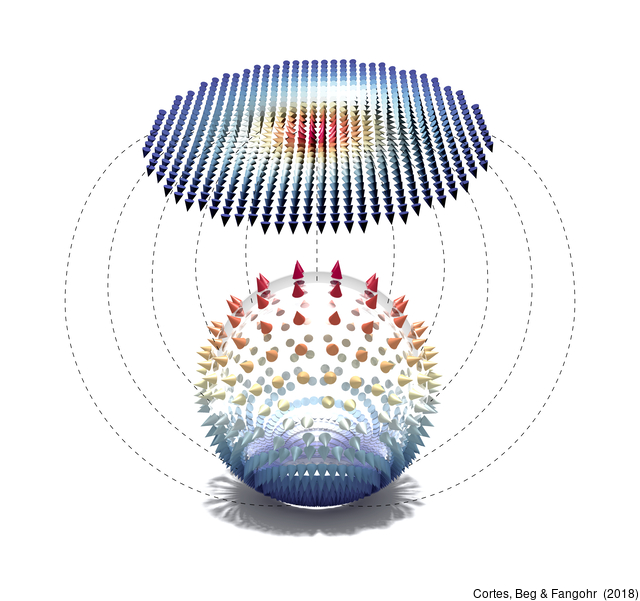
Mapping of Neel Skyrmion vector field onto surface of sphere. 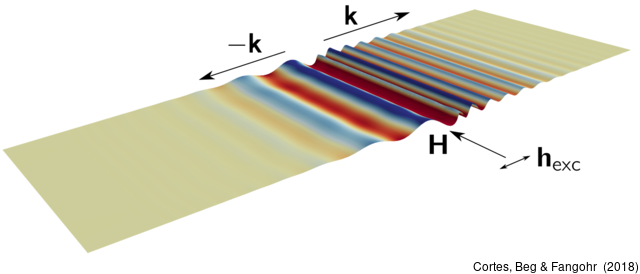
Spin wave propagation in helimagnetic material. One of multiple test problems to verify correctness of computational micromagnetics simulation tools. 2017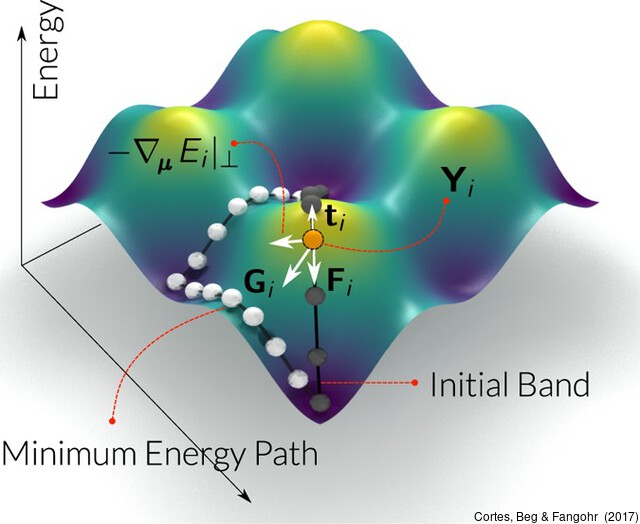
Study of energy barrier for skyrmion nucleation and annihilation in a nano track. The figure shows a schematic sketch of a two-dimensional phase space and an energy hyper surface plotted in the third dimension. 2016
Study of the effect of surface roughness on skyrmion formation in disk-shaped geometries (using finite elements and Finmag). 
A skyrmion hidden in a bulk structure: visualisation cut planes used at the top, center and bottom of the structure. 2015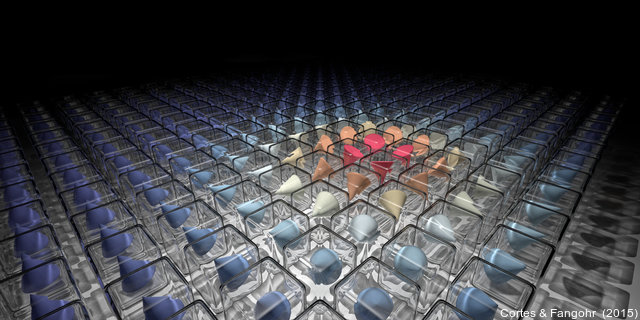
Representation of a finite difference approach to continuum field calculations: the vector field in each cube (here visuallised as a glass cube) is kept constant. Vector field shows a radial skyrmion. 
A beautifully rendered Skyrmion; obtained with an atomistic code and rendered by raytracing the configuration through povray. 
Three skyrmions confined in a triangle, similar to skyrmion confinement in disks (preprint) 2014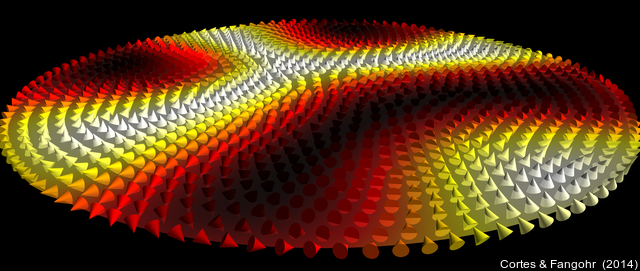
A metastable configuration of the magnetisation in a 150 nm wide FeGe nanodisk, stabilised by Exchange and Dzyaloshinskii-Moriya interactions and the border effects of the confined structure. The colour scale refers to the component of the magnetisation perpendicular to the disk plane. 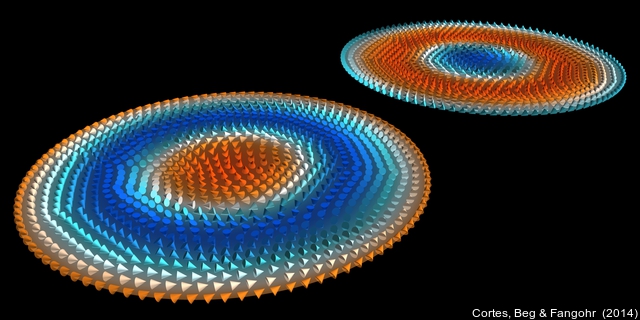
Two skyrmion states of opposite core orientation and equivalent energy, confined in a 130 nm wide FeGe nanodisk. The colour scale refers to the component of the magnetisation perpendicular to the disk plane. 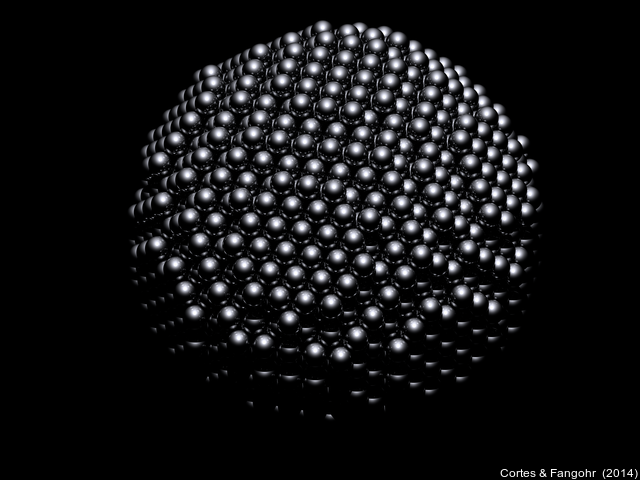
A Cobalt magnetic sphere of 4 nm diameter, composed of 3024 atoms arranged in a FCC crystal lattice. This structure is used in atomistic magnetic simulations where a large number of degrees of freedom is involved. (Created using Vampire.) 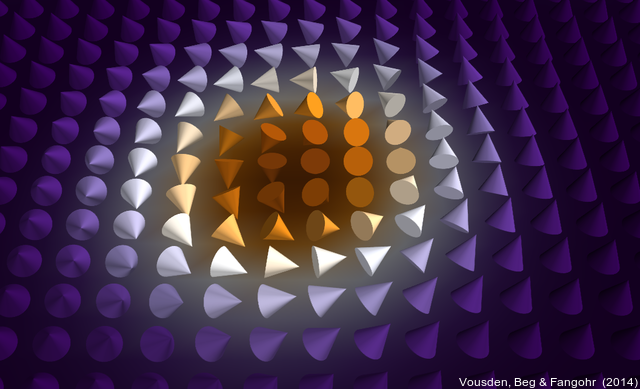
A chiral skyrmion: magnetic moments point down in the centre and up in the surroundings, with gradual transitions in between. Such configurations are caused by the DMI interactions found in selected magnetic materials. The data shown above is the results of a computer simulation to support experiments in the field. 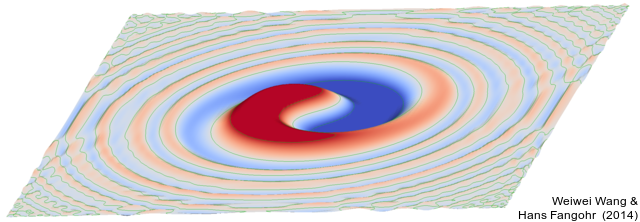
Yin-Yang like pattern emerging when a Skyrmion emits spin waves. The colour scale shows one-component of the in-plane magnetisation vector. Results of a 2d finite difference simulation. 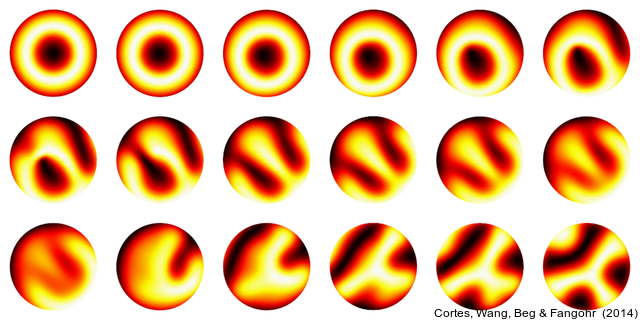
18 snapshots of transition of skyrmion configuration into disordered helix configuration. Colours present out-of-plane magnetisation component. 2013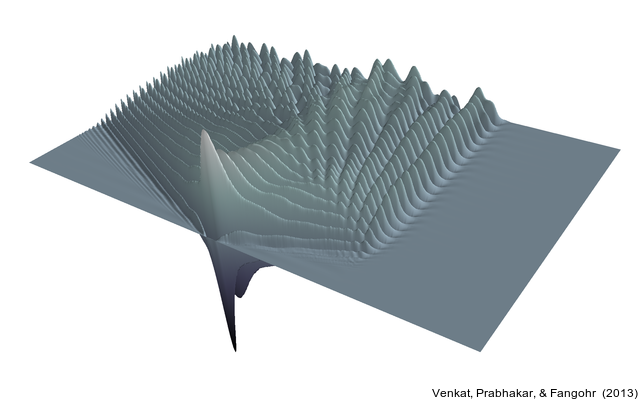
A spin-wave is excited (front middle) and propagates to the left and right. The second dimension shown is time. As the spin waves reach the boundary on the left, they are reflected. On the right, there is an area of high damping, which also reflects waves. Dispersion can be seen next to the wave front on the left. 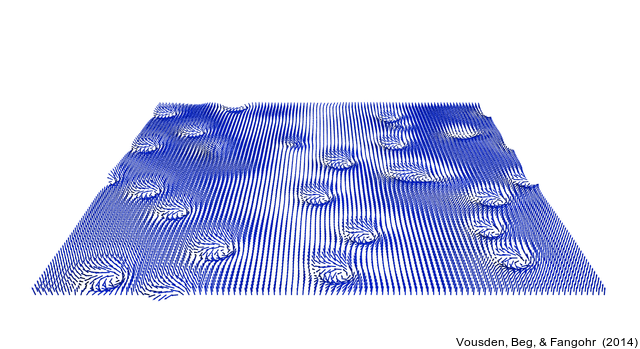
A system of 22 skyrmions in a 2d magnetic film with periodic boundary conditions: each vortex like structure is a topological defect -- this kind of excitation is named skyrmion after the British physicist Tony Skyrme. 2010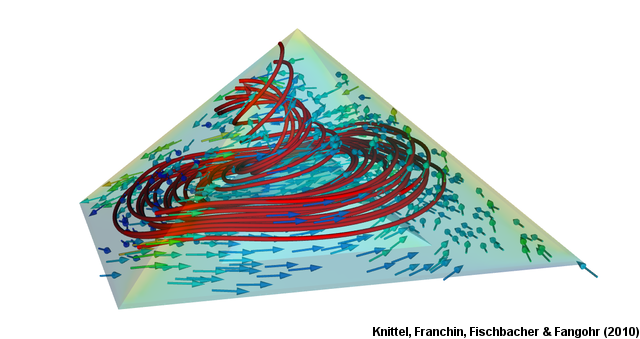
The magnetisation vectorfield in a Nickel pyramid shell visualised through 3d arrows and red streamlines. The ferromagnetic layer is sitting on top of a non-magnetic pyramid (edge length 100nm), and shows a vortex core that is leaning to the pyramid surface on the left hand side. The colour scale of arrows and surfaces shows the demagnetising energy density. 2009
Magnetisation in hollow ferromagnetic pyramid. (More detailed description to follow soon, 17 October 2009). The color represents demagnetisation energy density. 2008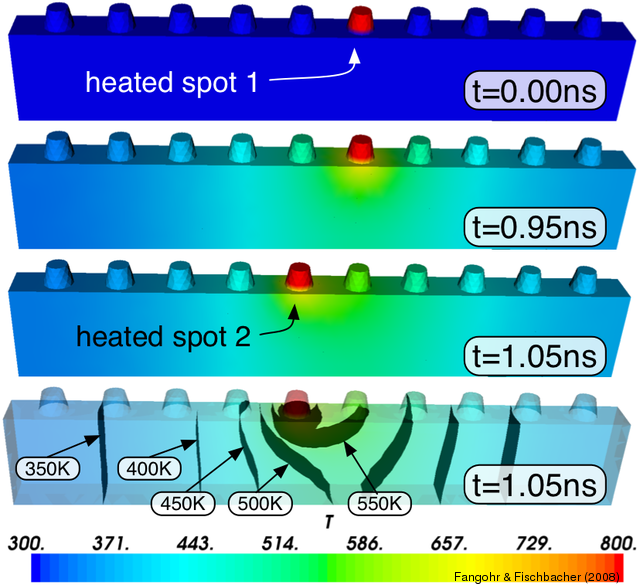
Schematic represenation of thermally assisted writing process on patterned media. Spot 1 is heated for 1 nano second (to 800K), then spot 2 is heated (instantaneously) to 800K. The colourmap shows the diffusion of temperature in the material. The last plot shows isosurfaces, i.e. layers of constant temperature in the material. The spacing of the iso surfaces is 50K. 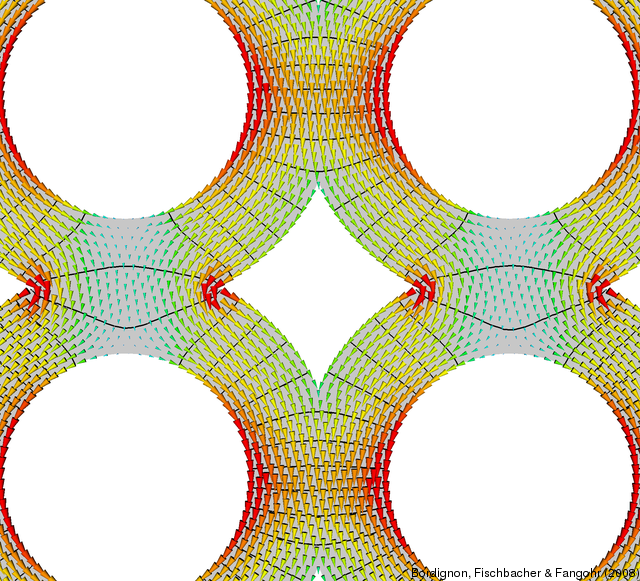 The electric potential (shown through black isosurfaces) and the associated current density that results from the electric field which is visualised through coloured cones. The size of the cones corresponds to the magnitude of the current density. The interaction of electric currents with magnetisation (not shown) is an area of big technological interests. Weak currents are used to probe the magnetisation, and large currents to manipulate the magnetisation. 2007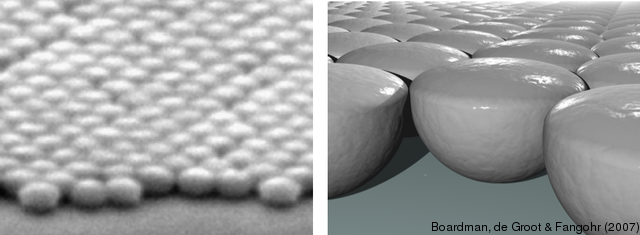 Left: Scanning Electron Microscope picture of sphere-like Nickel droplets (diameter of each is 500nm). Right: computer model. Computer simulations and experiments have been carried out to study the potential of such nano structures as bit patterned media in the next generation of magnetic data storage devices. 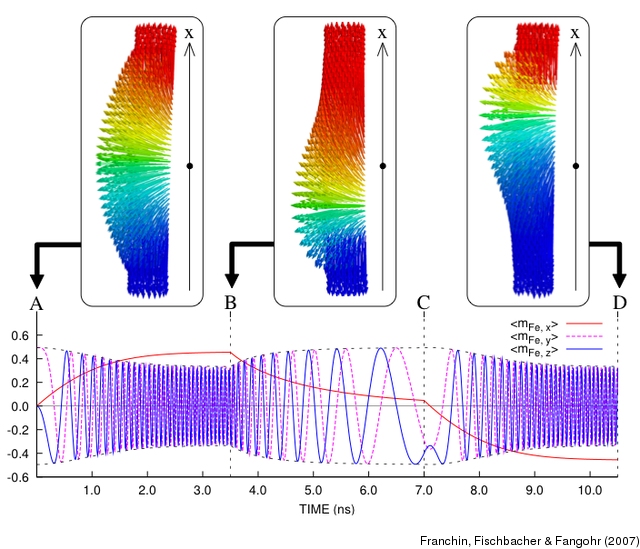 Top: magnetisation vectors in a ferromagnetic nano structure of size 50nm by 10nm by 10nm. This tiny device can be used to generate electromagnetic waves at frequencies (bottom plot) in the 10 GHz range by running a spin-polarised electric current through it. Applications include microwave assisted recording and wireless communications.  Computer simulation results of ferromagnetic nickel half sphere of diameter 350 nm. Left: a vortex has formed with core pointing in the +x direction (at an applied field of 80mT). Right: a vortex has formed around a core pointing roughly in +z direction (at an applied field of 65mT).  Computer simulation results of vibration modes of Carbon Nano Tubes. The image shows a particular deformation type called bending mode of a short carbon nano tube with 240 carbon atoms. 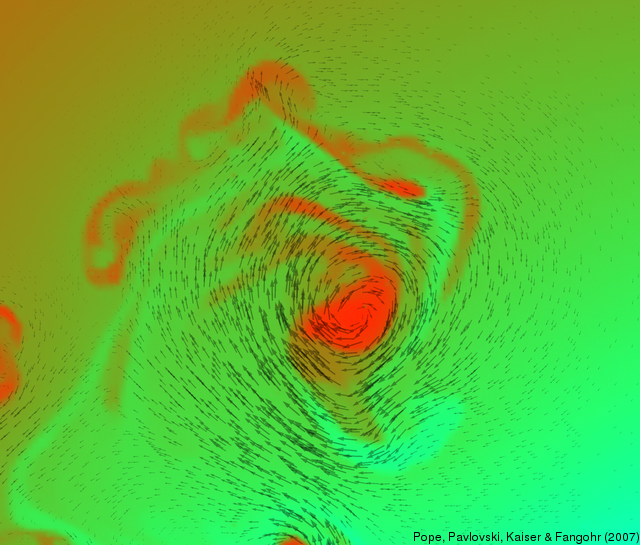 The image shows details of the vortex ring formed by a rising bubble in the atmosphere of a cluster of galaxies. Color represents density distribution with values between 1000 particles per cubic metre (green), and 1 particle per cubic metre (red). The arrows show direction of the velocity vectors with large arrow representing about 10,000 metres per second. Such rising entropy bubbles are thought to be crucial in the cooling process of galaxy clusters. 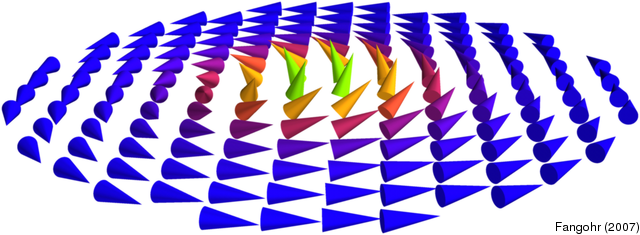 The magnetisation in a Nickel disk (diameter 100 nano metre, height 20 nanometre) forms a vortex. The magnetisation vectors in the vortex core point upwards to minimise the overall energy. Such magnetic nano structures could be used as the next generation of magnetic media. 2002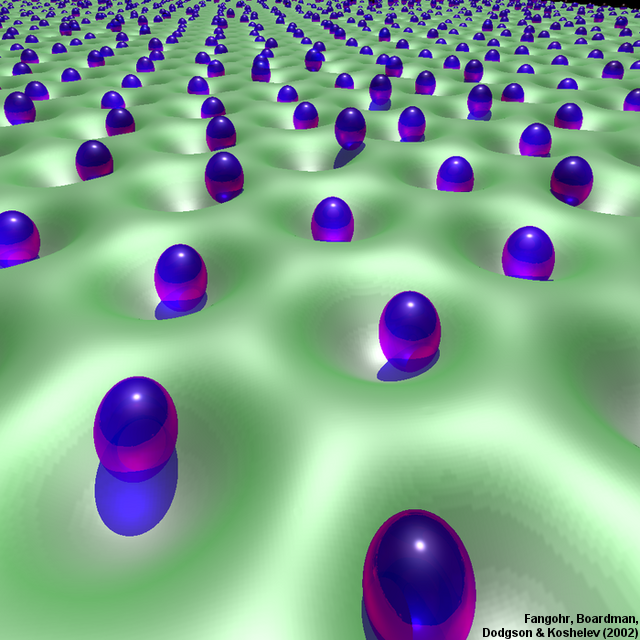 Pancake vortices in one layer of a layered high temperature superconductor are visualised as blue spheres. They repel each other and form a hexagonal lattice which is disturbed due to thermal fluctuations. The potential energy from interactions with pancakes in other layers is visualised through the green energy surface and stabilises the lattice. [Hans Fangohr, Matthew J. W. Dodgson, Alexei E. Koshelev (Phys. Rev. B 67, 174508), journal URL, preprint on cond-mat/0210580 |
|
